Conor McGregor Suspended 18 Months Under UFC Anti-Doping Policy: What It Means for His Return

The latest news in the MMA world has landed with a thud: Conor McGregor has been suspended for 18 months under the UFC’s anti-doping policy after missing three required drug testing appointments in 2024. This ruling brings clarity but also uncertainty. Below is a look at how we got here, what the sanction involves, and what it might mean for McGregor’s comeback.
The Violation: Missed Tests and Whereabouts Failures
According to the UFC and Combat Sports Anti-Doping (CSAD), McGregor missed three sample collection appointments in 2024—specifically on June 13, September 19, and September 20. These are referred to as “whereabouts failures,” a serious violation under UFC’s anti-doping rules.
Under standard protocol, three such failures in a 12-month period could warrant a 24-month suspension. However, due to mitigating factors and McGregor’s cooperation, CSAD reduced the penalty by six months.
Because of that reduction, McGregor’s suspension is retroactive to September 20, 2024, and is set to end on March 20, 2026.
Why the Reduction? Cooperating, Injury, and Timing
The standard 24-month penalty was lessened because McGregor accepted responsibility, cooperated fully with the investigation, and provided context around his missed tests.
Part of that context stems from McGregor’s injury status and downtime. At the times of the missed tests, he was not actively preparing for any bout, which factored into CSAD’s decision.
Still, CSAD emphasized that accurate whereabouts filing and the ability for unannounced testing are fundamental to the anti-doping policy. McGregor’s cooperation softened but did not eliminate the consequences.
The Suspension Timeline and Eligibility
Because it’s backdated, the 18-month suspension began on September 20, 2024. That puts McGregor’s earliest eligible return date at March 20, 2026.
It’s worth noting that this timeline still leaves open the possibility of McGregor appearing on the UFC’s proposed White House card in June 2026—if all compliance and regulatory hurdles are satisfied.
What This Means for His Reputation and Future
Public Perception and Scrutiny
For McGregor, this suspension affects not only his fighting schedule but his public standing. Critics will no doubt scrutinize the explanation for missing tests, and questions will swirl: did his injuries play too large a role, or was there lax compliance? Fan reaction could be mixed—some will accept his explanation, others will view it as bending rules for a star name.
Legacy and Return Pressure
He remains one of MMA’s most marketable fighters. But this kind of suspension adds a layer of pressure: when he does return, expectations will be immense. Any misstep could rebound harder, not just in performance but in how his legacy is judged.
Impact on UFC Anti-Doping Policy
McGregor’s case highlights the tension between star athletes and strict regulatory enforcement. The fact that his penalty was reduced may spark debate about equal treatment in the UFC anti-doping system. Some may argue it sends the wrong message; others will see it as due process in action.
The Road Back: Testing, Compliance, and “Back in the Pool”
McGregor has claimed he’s reentered the UFC’s anti-doping pool in anticipation of a return.
Official records show he was tested for the first time in 2025 under the new UFC testing regime.That said, some sources suggest that from late 2024 through much of 2025, he had not been officially listed in the testing pool.
Given existing rules, fighters often must be in a testing pool for a minimum period and pass tests before being cleared to compete. McGregor’s cooperation and timing will be closely watched under that lens.



